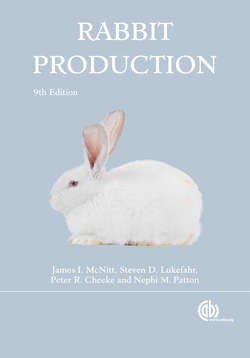Читать книгу Rabbit Production - James I McNitt - Страница 39
На сайте Литреса книга снята с продажи.
Winter nest boxes
ОглавлениеYou can insulate the nest box for winter use by lining it on the inside with one or two layers of corrugated cardboard or several thicknesses of paper and then completely filling it with straw so the doe will have to burrow into it to make a nest. You can also make a nest box for use in low temperatures by placing the standard-size nest box inside a larger box so there will be a space of 7–8 cm on all sides except for the entrance and the top. Fill the 7–8cm space with closely packed straw or other suitable insulating material. A wooden lid covered on the underside with two thicknesses of cardboard or several thicknesses of paper will supply the necessary top insulation. Make three holes 2 cm in diameter in the end of the lid opposite the opening into the nest box to prevent moisture condensation within the box and to provide ventilation.
Put corrugated cardboard or newspapers on the bottom of the inner box to keep the newborn litter from coming in contact with the cold boards, and then pack the nest box with clean straw so the doe will have to burrow into it to make a hollow for her nest. If the doe allows the litter to nurse and there is adequate dry fur for the litter to fluff to make a nest, the young can survive temperatures as low as -26 to -29°C in this type of nest box.
An electric heating pad covered with a moisture-resistant material has also been used with success. It is placed under the nest box and run at a very low setting. Care must be taken not to overheat the litter.
